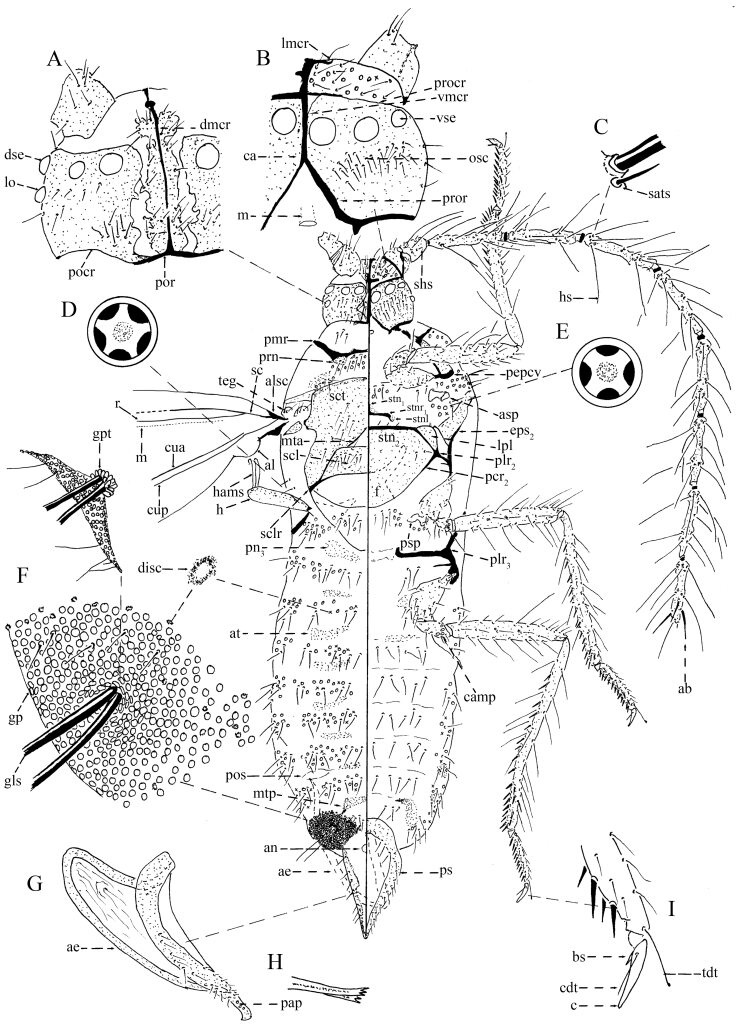Valid Names Results
Puto philo Powell & Miller, 2024 (Putoidae: Puto)Nomenclatural History
- Puto philo Powell & Miller 2024: 305. Type data: MEXICO: at Laredo, on Monstera, 9/18/1952, by Leary, Cary Fouts. Holotype, female, by original designation Type depository: Washington: United States National Entomological Collection, U.S. National Museum of Natural History, District of Columbia, USA; accepted valid name Notes: Paratypes: MEXICO: taken in quarantine at Brownsville, Texas, XI-7-1955, on Philodendron sp., collector?, 56955 (2 ad. ♀♀ together on 1 slide) NHM; taken in quarantine at Laredo, Texas, VI-26-1952, on Philodendron sp., Cary and Fouts, 521001 (1 ad. ♀, 2 second-instar ♀♀, 2 second-instar ♂♂, 2 first-instar nymphs together on 1 slide) FSCA; taken in quarantine at Laredo, Texas, VIII-15-1952, on Philodendron sp., Cary and Fouts, 521153 (1 ad. ♀ on 1 slide) UCD Illustr.
Common Names
- philodendron giant mealybug PowellMi2024
Ecological Associates
Hosts:
Families: 1 | Genera: 2
- Araceae
- Monstera | PowellMi2024
- Philodendron | PowellMi2024
Geographic Distribution
Countries: 1
- Mexico | PowellMi2024
Keys
- ZhengLiTa2025: pp.134 ( Adult (M) ) [Known adult males of Puto (revised from Powell & Miller 2024)]
- PowellMi2024: pp.303-304 ( Adult (F) ) [New World Puto species]
- PowellMi2024: pp.304-305 ( Adult (M) ) [Puto species]
Remarks
- Systematics: Adult females of P. philo differ from other Puto species by having the following combination of characters: a single, divided circulus; claw denticle absent; and dorsal oral-rim type tubular ducts, including those associated with cerarii, absent. Puto philo is similar to P. lamottei Matile-Ferrero, 1985 in having no oral-rim type tubular ducts in the cerarii, no dorsal oral-rim type tubular ducts in the medial areas, and a divided circulus. Puto philo lacks a claw denticle, whereas P. lamottei has one. The new species is also similar to P. spath (described below) in that both have a divided circulus, but no dorsal oral-rim type tubular ducts in medial areas, and no oral-rim type tubular ducts in the cerarii. However, P. philo differs from P. spath as follows (character states of P. spath are presented in parentheses): (i) claw denticle absent (claw denticle present); (ii) no multilocular disc-pores in the medial area of the thorax (with multilocular disc-pores in the medial area of the thorax); and (iii) with typical multilocular disc-pores of one size (multilocular disc-pores of two sizes, with large multilocular disc-pores each with a trilocular center). Puto philo also resembles P. paramoensis Matile-Ferrero, 1985 in having no denticle, no dorsal oral-rim type tubular ducts, and no dorsal multilocular disc-pores. However, it differs from P. paramoensis as follows (character states of P. paramoensis are presented in parentheses): (i) ventral multilocular disc-pores on the thorax absent (with many ventral multilocular disc-pores in the medial and marginal areas of the thorax); (ii) multilocular disc-pores predominantly each with 9 loculi but with some 10-locular disc-pores near the vulva (two distinct sizes of multilocular disc-pores, 10- and 6-locular, with the larger size near the vulva); and (iii) claw digitules capitate (claw digitules simple). The male of P. philo is the only known Puto male with both a bifurcate aedeagus and the claw denticle absent. It is similar to the male of P. yuccae (Coquillett, 1890) in having the apex of the aedeagus bifurcate, but differs from it as follows (P. yuccae characters are presented in parentheses): (i) claw without denticle (denticle present); (ii) tarsal digitules clubbed (acute); (iii) 6 pairs of simple eyes (7 or 8 pairs); (iv) with 3, sometimes 2, hamulohaltere setae (with 4); and (v) abdominal segments each with multiple rows of multilocular disc-pores (each with one row).
- Structure: Slide-mounted holotype adult female 2.49 mm long, 1.56 mm wide; paratypes 2.55–4.83 mm long, 1.78–3.34 mm wide; body elongate oval. Slide-mounted adult male, 2.85–3.21 mm long, 0.77–0.80 mm wide; body elongate, with segment VIII produced laterally. (Powell & Miller 2024)
- General Remarks: Detailed description and illustration in Powell & Miller (2024).
Illustrations
Citations
- PowellMi2024: description, description of male, diagnosis, illustration, key, nymph, taxonomy, 305-317




